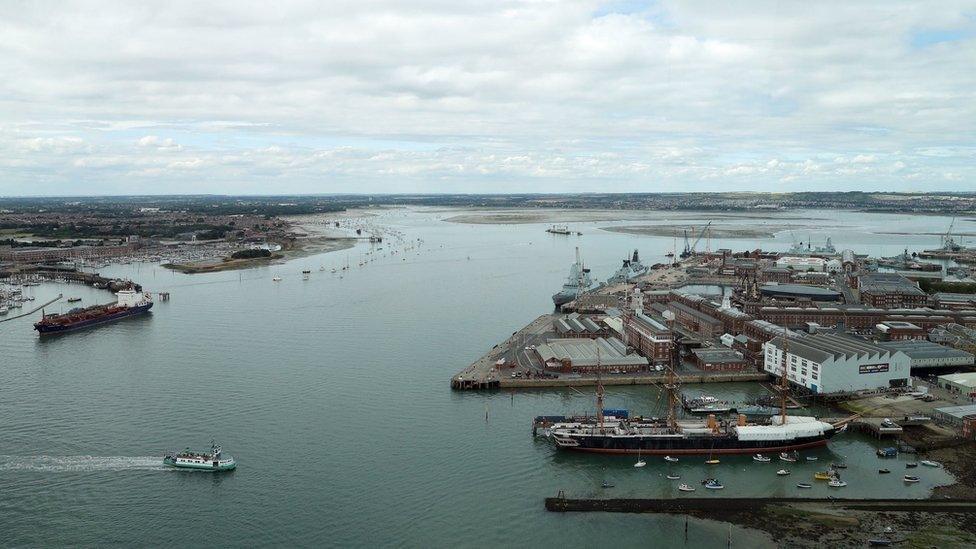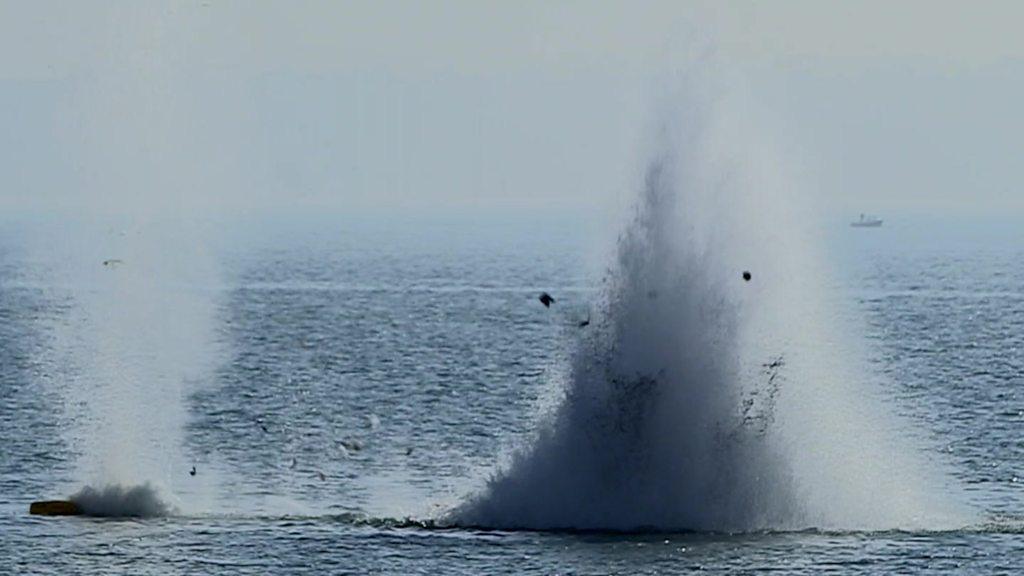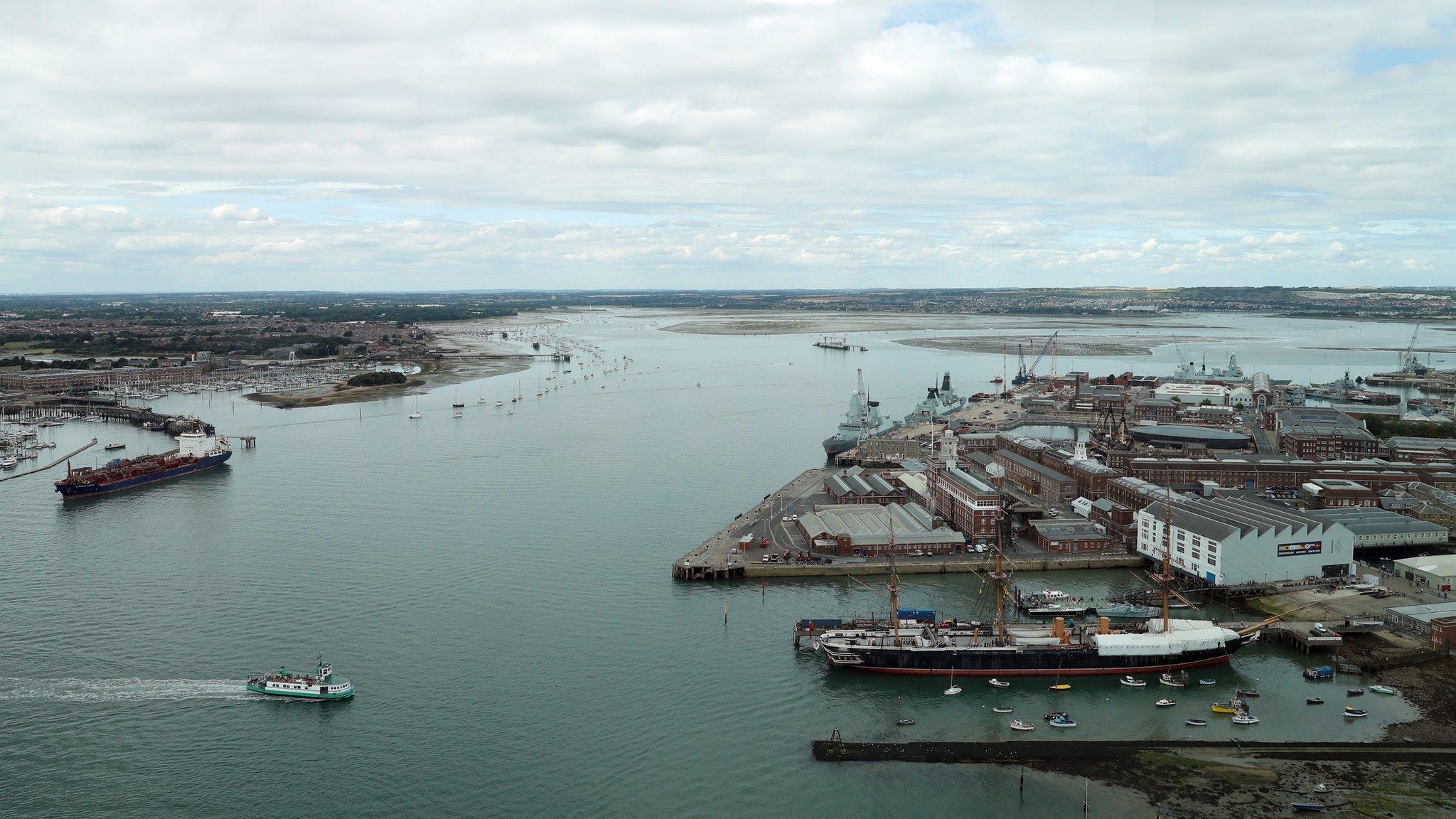Portsmouth evacuations prompted by WW2 bomb find
- Published

The 500lb bomb was found by a dredger early on Wednesday
Homes and a shopping centre were evacuated and ferry services halted from Portsmouth Harbour after a World War Two bomb was found in the water.
Trains between Portsmouth and Southsea and Portsmouth Harbour were also suspended.
The bomb, found by a dredger in the harbour at about 05:00 GMT, was towed out to sea and blown up at 16:00.
Cross-channel ferries to and from Portsmouth were suspended when a 500m exclusion zone was set up.
The cordon was lifted by 14:30, but ferry services were disrupted into the evening.
World War Two bomb blown up in Portsmouth
The harbour was shut to ferry traffic at 14:00 as the 500lb (227kg) German bomb was towed past the harbour entrance.
The Ministry of Defence (MoD) said it carried out a controlled explosion one-and-a-half miles east of the Isle of Wight.
Cdr Del McKnight, who led the bomb disposal team, said: "Everything went smoothly and we were pleased to be able to get the operation completed in daylight.
"Despite being old, these devices still pose a very serious threat when they are moved."
Ahead of the operation, police evacuated the shopping and residential areas of Gunwharf Quays. The complex reopened at 14:20.
People were also asked to leave the Wightlink terminal, Old Portsmouth, Portsmouth Harbour station, Gosport ferry station and the Hot Walls areas.
Portsmouth Historic Dockyard was also closed.

The WW2 bomb has been towed out to sea and will be detonated by bomb disposal experts
Wightlink said, after services resumed, delays were expected with passengers boarding on a first-come first-served basis.
Brittany Ferries earlier had three ships waiting to come into Portsmouth - one from Spain and two from France - carrying a total of 650 passengers.
Its Normandie ferry, which had arrived from Caen, was held for almost five hours.
Nigel Wonnacott of Brittany Ferries apologised for the "unexpected and irritating delay".
How the Royal Navy disposes of unexploded WW2 bombs
Condor Ferries' Commodore Clipper, which serves the Channel Islands and had 94 passengers onboard, was also held outside the harbour for several hours.
The exclusion zone meant some Naval base employees had to be moved to other buildings at the dockyard.
It is the third device to be found in the harbour during dredging works, since September.
Dredging is being carried out to deepen and widen a four-mile (7km) channel to allow the the navy's new 65,000-tonne aircraft carriers to dock.
HMS Queen Elizabeth is due to be handed over to the MoD in 2016 before being put into service in 2020.
- Published5 November 2016

- Published10 September 2016
